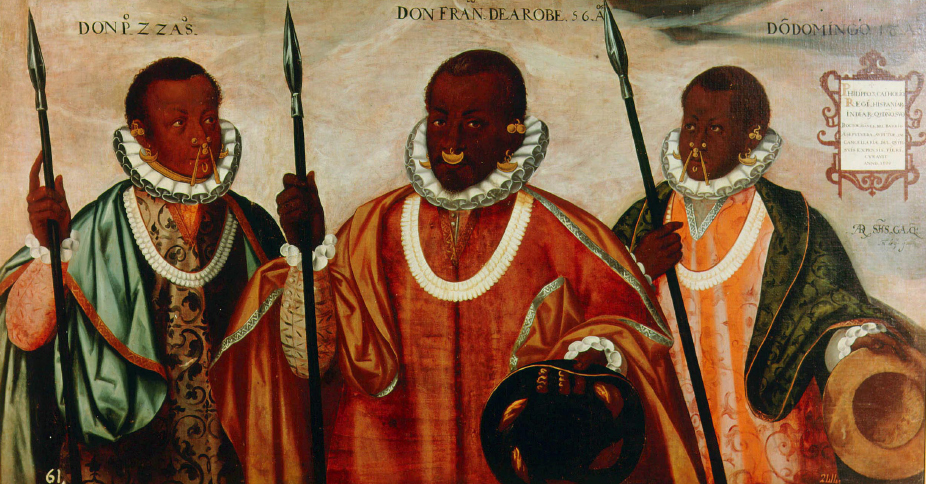DOCUMENT 14.3, The Mulatto Gentlemen of Esmeraldas, 1599
DOCUMENT 14.3
The Mulatto Gentlemen of Esmeraldas, 1599
There are superficial similarities between The Mulatto Gentlemen of Esmeraldas (1599) by Andrés Sánchez Gallque and Velázquez’s famous portrait of Juan de Pareja. Gallque’s work also depicts non-Europeans in European garb, and his subjects were real people, as indicated by the inclusion of their names and ages. This, however, is where the similarities end. Velázquez portrayed Pareja in European clothes not merely for effect, but because such clothes were part of who Pareja was. In contrast, Gallque’s startling juxtaposition of clothes and ethnicity is precisely the point. As viewers, we are meant to reflect on the meaning of the subjects’ partial cultural assimilation and to place it in the context of Spain’s growing colonial empire in the Americas. The central figure, Don Francisco de Arobe, led an Afro-Indian community on the north coast of Ecuador. His son, Don Pedro, stands to Don Francisco’s right. In 1597, in exchange for his acceptance of Spanish authority and Christianity, Don Francisco retained his status, serving as the governor of his small community. Gallque’s portrait was commissioned by Juan del Barrio de Sepúlveda, the same man whose military and diplomatic efforts led directly to the subjugation of Don Francisco and his people.

QUESTIONS TO CONSIDER
Question
What details did the artist include to mark his subjects as men of a particular region? What details did he include to demonstrate the penetration of European culture into Ecuadorean society?
Question
How might an Ecuadorean viewer have responded to this painting? How might a European viewer have responded?